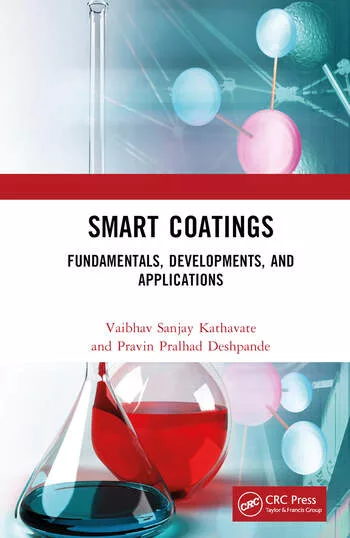Automotive Coatings: Past, Present and Future
Last fall, PPG Industries (Pittsburgh) held a half-day informational seminar on automotive coatings. Dennis Taljan, director, decorative product/technology management, and Bob White, director of substrate protection systems, spoke at the event. Following is an edited transcript containing a portion of their presentations.

Key points
Automotive finishes are confronted with an almost limitless variety of environments and environmental assaults.The science and technologies employed have become much more sophisticated and effective, and are evolving rapidly. Note the many awards automotive coatings have received in recent years.
The pace of performance improvement over the past 20 years has been dramatic and it will continue to accelerate. Key examples: The average paint material cost of a vehicle has gone from about $200 to $120—a tremendous improvement for the industry overall. The number of pounds of VOCs generated per unit on average have dropped from 6.9 pounds to 2.8 pounds. Through the use of various formulations, resin chemistries, etc., we’ve been able to reduce the ED50 value (a measure of odor) from 200 to 100. Regarding coating warranties, all manufacturers will offer long warranties in the future.
Coatings chemistries and applications processes are inseparable and mutually dependent.
The final finish is a complex construction of multiple layers that perform in unison. It doesn’t do any good to invent
the world’s best E-coat if it’s incompatible with the next coating layer.
The future of pretreatment
There are a number of sequenced stages in the automotive pretreatment process where opportunities may exist for process compression. As the quality and technology specific to substrates, stamping oils and lubricants, mill-applied coatings and pretreatment chemistry evolves, there will be an opportunity to reduce the number of stages, resulting in a more cost-effective process. Based on technology evolution and innovation, we feel we can eventually eliminate the need for the pretreatment sealer stage as the final step in the pretreatment process.The chemistry typically used in this process has been chrome, and we’re moving toward nonchrome rinses. Today, in excess of 90% of OEM manufacturers in North America now use nonchrome rinses. Much of the need for that rinse depends on both metal quality and the quality of the pretreatment coating. As we improve the upstream processes, we can reduce the need for some of the subsequent stages needed to make the pretreatment coating secure, with the feasibility of eliminating the need for a final rinse chemistry altogether.
There could be a shift of applying corrosion-protection coatings from the OEM paint shop to the steel mill or coil coater. The increased use of pre-coated metals will affect the need for a conventional pretreatment process.
Future environmental initiatives include reducing the heavy-metal content within the pretreatment process, which includes the elimination of chrome. Most pretreatment coatings include zinc, nickel and manganese. There will be an ongoing emphasis to minimize the use of heavy metals across all manufacturing segments, including automotive.
Cost-reduction opportunities include the development of lower-temperature cleaners, which will reduce energy use,
and cleaners that will extend cleaner bath life.

Future E-coat opportunities
Compressed process: A UV-durable E-coat is under development that could ultimately eliminate the requirement for a conventional spray primer system. By incorporating UV durability into the electrocoat and topcoat chemistry, there is potential to eliminate the primer step. That would eliminate one spray booth from the typical process, thus reducing capital and operating costs and the footprint of an OEM paint line.Lower-cure E-coat: Current requirements for curing are in the 300 to 350°F range, which prevents the use of composites that would distort at that temperature. As we continue to develop and commercialize electrocoat technologies with lower-cure requirements, it will allow for the use of a broader scope of composite substrates.
Multifunctional E-coat: This is the realm of what-ifs. Could future electrocoat technology include some level of solar cell capability? We’re working on determining whether we can incorporate that type of function in this technology. Could a future electrocoat technology incorporate a fire retardant capability along with current properties? We’re looking at this type of functionality. Could a future electrocoat technology provide sound-dampening properties? We think it can.
The electrocoat process opens up a wide variety of innovative opportunities to expand the functionality and use of
electrocoat technology, particularly as applied to automotive manufacturing. We’re also looking at whether we can
completely clearcoat the vehicle using an automated E-coat process.

Decorative coatings
Barring someone perfecting a primerless process, waterborne coatings will grow, taking off now and becoming the dominant primer coating by 2020. Solventborne primers will nearly disappear in automotive manufacturing by then. Powder primers will continue to grow, but not as much as waterborne coatings.There will be plants that will try to eliminate the primer, and try a lot of different things. It will take until 2020 for that to be practical on a large basis. After that, primer may start to disappear on a mass basis.
The most important aspect of powder coatings is reclaim. For every 100 pounds of powder sprayed, only two pounds end up as nonhazardous waste. Powder systems don’t need a huge wastewater system under the spray booth, there’s less noise, and no odor or sludge. The limiting factor of powder, in a primer context, is capital investment. It makes very good sense in a greenfield facility; it makes far less sense for a brownfield facility or for renovation. That’s why waterborne primers, from a total usage perspective, is going to surpass powders. The car companies don’t all agree on that, and that’s the debate going on now.
The amount of powder necessary has been decreasing. When powder primers were first introduced, they were about 75 microns thick. It’s now down to about 50 microns. It will probably be reduced to about 25 microns, which is about as thin as we will probably be able to go.
Chipping, from impact, is the main problem occurring today. The weakest link is the substrate to the zinc coating.
We’re working to produce powder and waterborne systems in which no failure ever occurs at the level of the steel,
but somewhere in the primer/surfacer layer.
Color measurement
There has been a tremendous growth in spectrophotometer use. You can have a simple system where there’s a color panel, a light source that reflects off the color panel in multiple angles, a lens, a dispersing element, detectors and a microprocessor, and that can show how the color looks.The level of sophistication is such that the information can be captured digitally and the appearance of the vehicle can be transmitted over the Internet. A plant can be painting cars in Mexico, and we can judge the color of those vehicles from labs in the United States. We can adjust our production color to match what they get on-line.
This is an important part of achieving color harmony. We can take color measurements of all the parts electronically, capture them, transmit them to all the sites making the various parts so that they can adjust their production to line up. That’s a huge improvement over having someone flying to all of those different sites.
We also look at how these things act at different angles. With micas, aluminums and various reflecting pigments, depending on the angle at which they are observed, the color can look different.
With absorption pigments, the hue and intensity depends on their absorption and wavelength range. Their ability to scatter light is influenced by their particle size. Aluminum pigments are affected by the geometry of the particle, particle size, particle-size distribution, degree of polish or smoothness and the lubricant used for milling.
The most challenging part for us in color harmony is getting parts that are geometrically aligned at different places to look the same. At different angles, colors may have a different shade. To get a color to look right to the buyer, we may make one part lighter and one part darker so that when they line up at a certain angle on the car, they look like the same color.
Looking for a reprint of this article?
From high-res PDFs to custom plaques, order your copy today!






